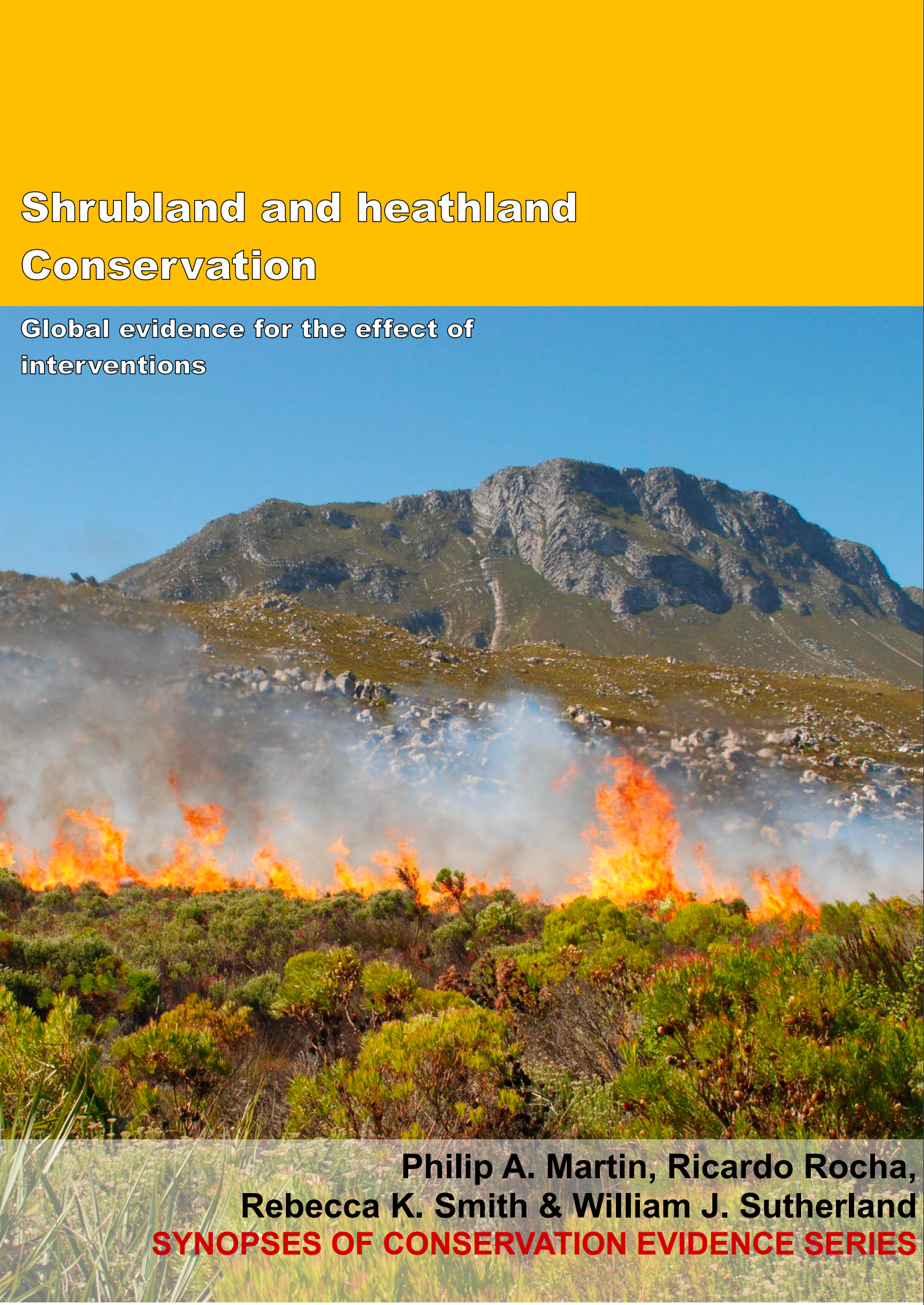Burn shrublands to reduce impacts of pollutants
-
Overall effectiveness category Unknown effectiveness (limited evidence)
-
Number of studies: 2
View assessment score
Hide assessment score
How is the evidence assessed?
-
Effectiveness
0% -
Certainty
17% -
Harms
0%
Study locations
Supporting evidence from individual studies
A controlled study in 1998-2000 in a heathland site in Surrey, UK (Barker et al. 2004) found that burning to reduce the concentration of pollutants did not alter the cover or shoot length of heather Calluna vulgaris relative to areas that were mowed. After two years, heather cover did not differ significantly between areas where prescribed burning was carried out (83%) and mowed areas (77-88% cover). Additionally, heather shoot length did not differ significantly between areas where prescribed burning was undertaken (14 cm) and mowed areas (14-16 cm). In 1998 eight 16 m2 plots were mowed and four plots were burned. Vegetation cover and shoot length were estimated every year in 1998-2000.
Study and other actions testedA randomized, replicated, controlled study in 1998-2000 in a lowland heathland site in Surrey, UK (Power et al. 2001) found that prescribed burning to reduce the impact of nitrogen deposition did not alter the shoot length of common heather Calluna vulgaris or the number of purple moor grass Deschampsia flexuosa seedlings when compared to mowing. In areas that were burned common heather shoot length did not differ significantly (13cm) from shoot length in areas that were mowed (13-15 cm). The number of purple moor grass seedlings did not differ significantly between areas where prescribed burning was used and areas that were mowed (burned: 1.6 seedlings/plot; mowed: 1-1.5 seedlings/plot). In January 1998 four 4 x 4 m plot were established. Nitrogen was added to each plot as a mist of ammonium sulfate to simulate nitrogen deposition. Each plot was divided into four subplots, two of which were mowed, one of which was burned using prescribed burning methods, and one of which was burned to simulate a wildfire. Shoot length and cover were measured in 25 points in each subplot in October 1998-2000. Seedlings establishment was recorded in September 1999.
Study and other actions tested
Where has this evidence come from?
List of journals searched by synopsis
All the journals searched for all synopses
This Action forms part of the Action Synopsis:
Shrubland and Heathland Conservation
Shrubland and Heathland Conservation - Published 2017
Shrubland and Heathland synopsis





)_2023.JPG)














